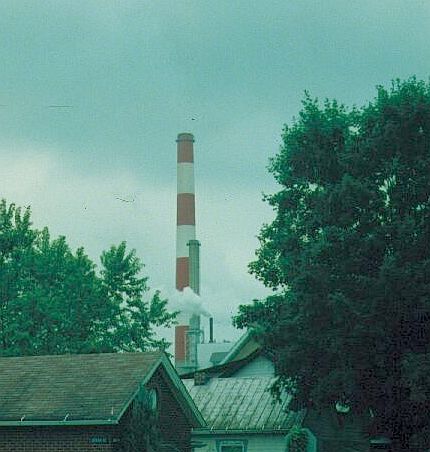Download the formulas in Microsoft Excel if you get stuck.
Economic Geography - Lab 4: Market Potential and Aggregate Travel Models

The purpose of this exercise is to introduce students to two additional measures useful for doing site location analysis. These are related to the gravity model that we have already visited. This week we will visit the Market Potential Model and the Aggregate Cost Model. These models are location decision-making models that may be used by industrial, transportation or retail interests. The market potential model seeks to determine the likely interaction a place may have with other places. For example, it may be used to estimate the number of customers a business may expect. It considers local customers and distant customers.
The aggregate travel model seeks to measure costs associated with transportation of a good. Such a model might be used to determine the number of trips one might have to make from a place (like a central warehouse) to all the potential customers in a district.
Below are the formulas you will use.
Market Potential Model: Works best when businesses have the liberty of focusing on revenue maximization thanks to a monopolistic or oligopolisitic conditions. This is very similar to the gravity model.

Where:
Mi = Market Potential at place i
Pj= Population of place j
Dij= Distance between places i and j.
When a company faces competition, cost minimization becomes more important. Under competitive conditions, the Aggregate Travel Model makes better sense.

Where: Ai = Aggregate Travel at place i.
Pj= Population of place j
Dij= Distance between places i and j.
Scenario
You just landed a big contract with a major furniture retailer to direct their expansion effort into a new market territory. The company wants you to locate for them a new multi-million dollar showroom facility, and the regional warehouse. The territory the company is expanding into is a four county region. The region is sparsely populated. There are less than 115,000 people in the four county region. Each county has a single small city that functions as the county seat and retail center for that county. A handful of state highways serve the area, essentially connecting the county seats. People move readily between cities and your company is the only furniture store in the region.
Task
Using the market potential model and the aggregate travel model; and incorporating the data/map found in the file 340mktpot.xls, tell these big shots where to put their retail facility and their warehouse/distribution facility. You will direct the company to put the store in the city with the best market potential and the warehouse/distribution facility in the city with the least aggregate travel costs. (use 1 mile for distance within a city).
Answers
You are to provide the following data to your boss by your next meeting. Don't use dollar signs or commas, just numbers or letters.
 About Dr. Graves | Site Map | Contact Dr. Graves | ©2003 Steven M. Graves - Geography Department, California State University - Northridge
About Dr. Graves | Site Map | Contact Dr. Graves | ©2003 Steven M. Graves - Geography Department, California State University - Northridge 
